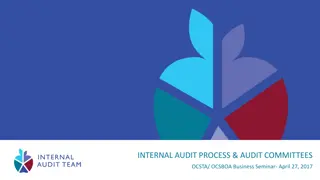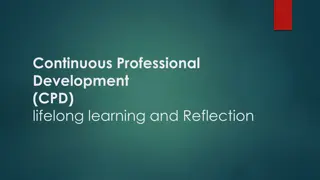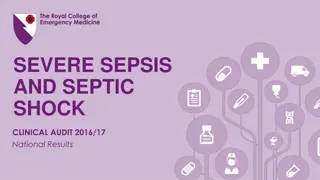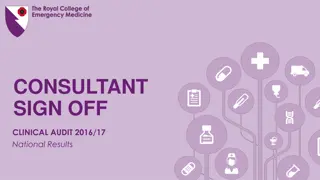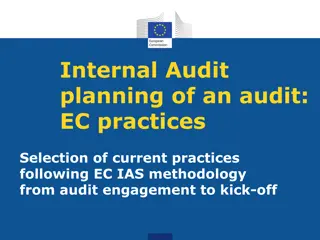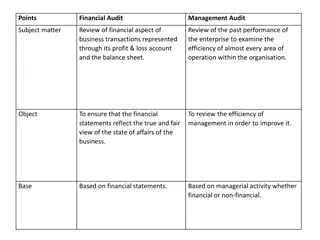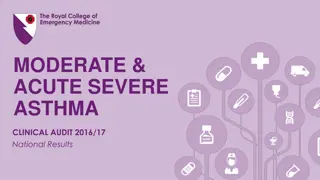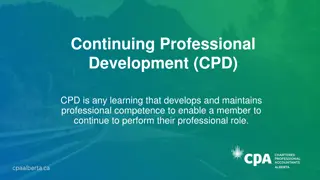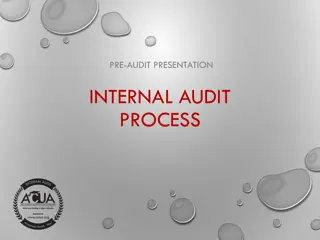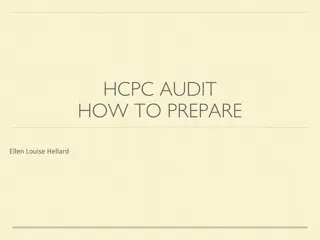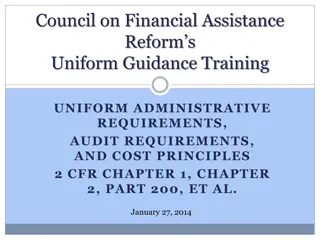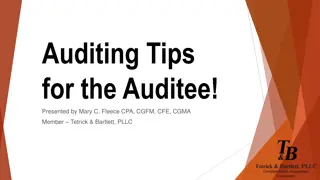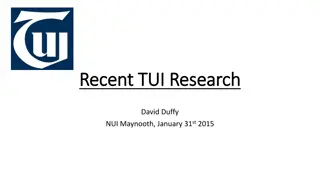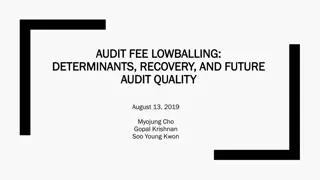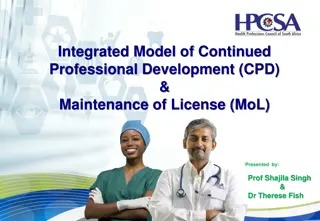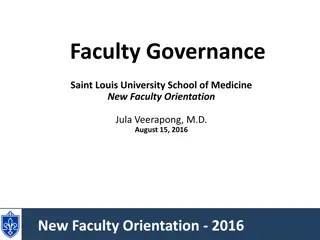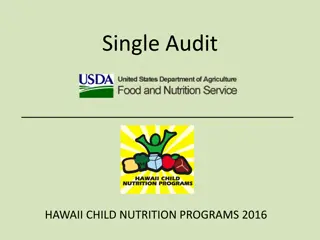Faculty CPD and Audit Overview
In this presentation, Dr. P. Badrinath provides insights into Faculty CPD and audits, including reflections on unsatisfactory submissions. The content delves into the proportions of unsatisfactory returns in the 2016-17 round and highlights historical events related to November 8th. Additionally, the presentation touches on the significance of evidence in CPD submissions, showcasing professional experiences and qualifications.
Download Presentation

Please find below an Image/Link to download the presentation.
The content on the website is provided AS IS for your information and personal use only. It may not be sold, licensed, or shared on other websites without obtaining consent from the author.If you encounter any issues during the download, it is possible that the publisher has removed the file from their server.
You are allowed to download the files provided on this website for personal or commercial use, subject to the condition that they are used lawfully. All files are the property of their respective owners.
The content on the website is provided AS IS for your information and personal use only. It may not be sold, licensed, or shared on other websites without obtaining consent from the author.
E N D
Presentation Transcript
All you want to know about Faculty CPD & audit including reflection Dr.P.Badrinath PhD (Cantab) FFPH Consultant in PH Medicine & Associate Clinical Lecturer EOE Regional CPD advisor
In 2016-17 round what proportion of CPD submissions were deemed as unsatisfactory after the audit?
Unsatisfactory returns 0% 4.2% 9.8% 11.4% 14.5%
Unsatisfactory returns 0% 4.2% 9.8% 11.4% 14.5%
This day in History - Quiz
What landmark event took place today 8thNovember 1965 that made Great Britain humane country?
What has this got to do with 8th of November 2016?
The Twitter President
Show us the Evidence
My attempt at evidence Member of Faculty CPD Committee Involved in national CPD audits Been audited twice before Completed PGC Med Ed (key assignment on reflection)
CPD submission & audit moving forward
CPD Definition The Academy of Medical Royal Colleges (AoMRC) and the Faculty of Public Health (FPH) defines Continuing Professional Development (CPD) as a continuing process, outside formal undergraduate and postgraduate training, that enables individual doctors (and other public health specialists) to maintain and improve standards of medical (and public health) practice through the development of knowledge, skills, attitudes and behaviour
Hope to Provide clarity on what is expected of Faculty members regarding CPD
What we will discuss 2016-17 audit results How to submit a good CPD return A brief note on reflection Q & A
Why audit CPD? Requirement of Academy of Royal Medical Colleges So Faculty can assure itself that participants are meeting CPD policy requirements Participants will use audit results for appraisal documentation Opportunity to feed back on quality of reflective notes
Who gets audited? All members and fellows except for those claiming exemption from CPD are eligible for audit One in five eligible members (non-random sample) Additional 2 per cent random sample Anyone with unsatisfactory audit (including not submitting) previous year Anyone not returning CPD submission for that year
Audit thresholds Submission must be personally identifiable There must be a PDP(s) covering the relevant CPD year Must be at least 50 credits (up to 100 assessed) All credits supported by a reflective note No more than 5 credits per reflective note A minimum of 25 credits directly related to PDP Balance type of activities One type of activity not more than half of claimed credits
Audit thresholds To be submitted online (Exception - given prior approval) At least 40 credits supported by a reflective note assessed as satisfactory Now qualitative assessment of reflective notes.
Outcomes of audit If submission deemed satisfactory Participant sent letter advising satisfactory audit If submission deemed unsatisfactory Documentation sent to a second Regional CPD Co-ordinator for repeat audit If deemed satisfactory by second auditor Participant sent letter advising satisfactory audit If deemed unsatisfactory by second auditor Reviewed by Director of CPD who will make ultimate decision whether to send letter advising unsatisfactory audit
Review of CPD audit results 2016 364 319 59 2017 436 356 81 Selected for audit Submitted audit papers Failed by at least one auditor Failed audit 22 (6.9%) 35 (9.8%) Less than 40 points supported by a satisfactory reflective note No Personal Development Plan Less than 25 points explicitly cross-referenced to the PDP Errors resulted in <50 CPD points
A selection of comments Your reflective notes were of a satisfactory quality But, the PDP provided is not for the year being audited After requesting correct PDP - the same one was submitted <50 points claimed 12 points claimed for a single day The reflective notes are not well developed all virtually the same wording, no evidence of reflective practice Reflections are very brief and notes are mainly descriptive Comments such as self-evident , or as day 1 are not reflection Lists of subjects covered are not reflection There was no linkage of any activities to the relevant PDP
Key part of CPD audit - Reflection Hence next session how to write a better Reflective Note
The importance of reflection Increasing professional emphasis on good quality reflective notes to augment professional learning and strive to be a better and more effective practitioner both in appraisals and revalidation: You should use the framework for appraisal & revalidation to reflect on your practice and your approach to medicine, reflect on the supporting information you have gathered and what that information demonstrates about your practice, identify areas of practice where you could make improvements or undertake further development, demonstrate that you are up to date and fit to practise. Source: General Medical Council. The Good medical practice framework for appraisal and revalidation.
What is reflection? consciously thinking about and analysing what you are doing and what you have done; thinking about what and how you have learnt Reflection is a developmental thinking process that is contextualised into past experiences, thus it is unique to each individual and not merely a description of the events themselves Source:Brodie, L. (2008). Reflective Writing Guide for Students
What is reflective writing? Reflective writing provides evidence of reflective thinking valuable tool for helping you to formulate and clarify your evolving thinking as it develops. Usually involves: Looking back at something (often an event, i.e. something that happened, but it could also be an idea or object). Documenting your personal analysis of the event or idea (thinking in depth and from different perspectives,). Writing carefully about what the event or idea means for you and your ongoing progress as a learner and/or practising professional.
Reflective writing is not: just conveying information, instruction or argument pure description, though there may be descriptive elements a straightforward decision or judgement (e.g. about whether something is right or wrong, good or bad) simple problem-solving a summary of course/conference notes a standard essay
Why reflection Reflection promotes critical thinking, deepens understanding, leads to improved self-assessment and professionalism and delivers best results when shared (Aronson & Sanders)
What we have discussed 2016-17 audit results How to submit a good CPD return A brief note on reflection
A final Thought
Faculty CPD is not about catching people but to support and help colleagues so that we as a profession are assured that standards are maintained and we all continuously learn and develop
Thank you for your time & attention



